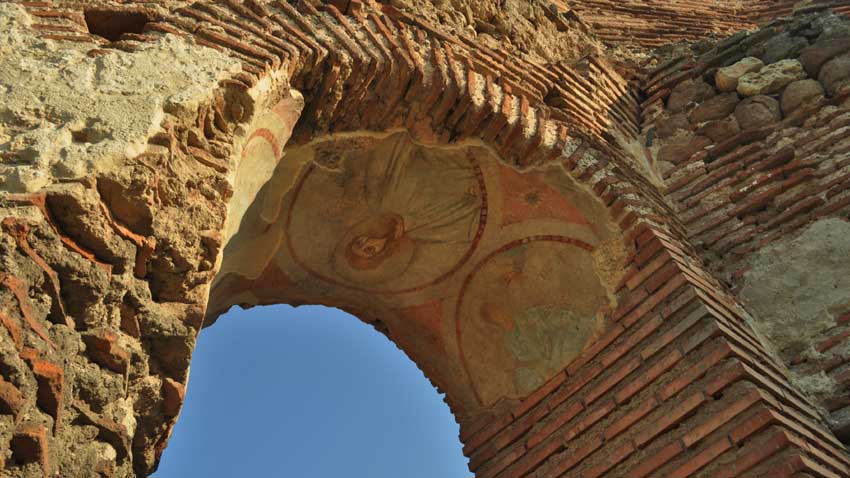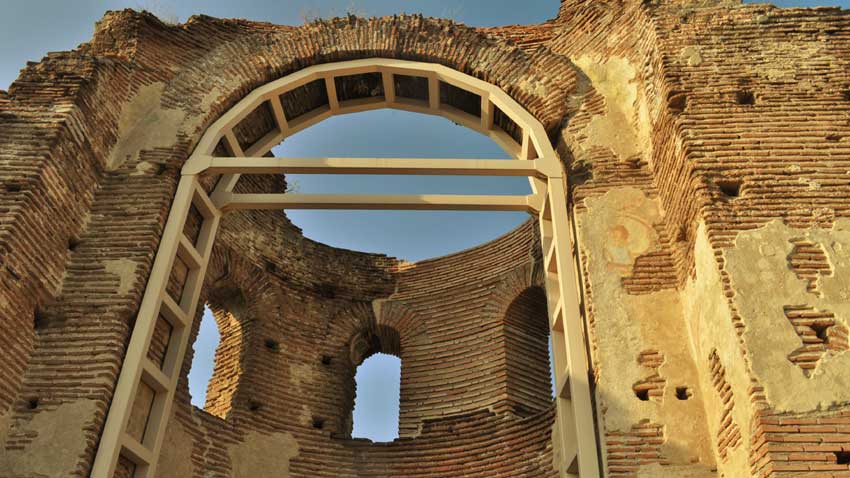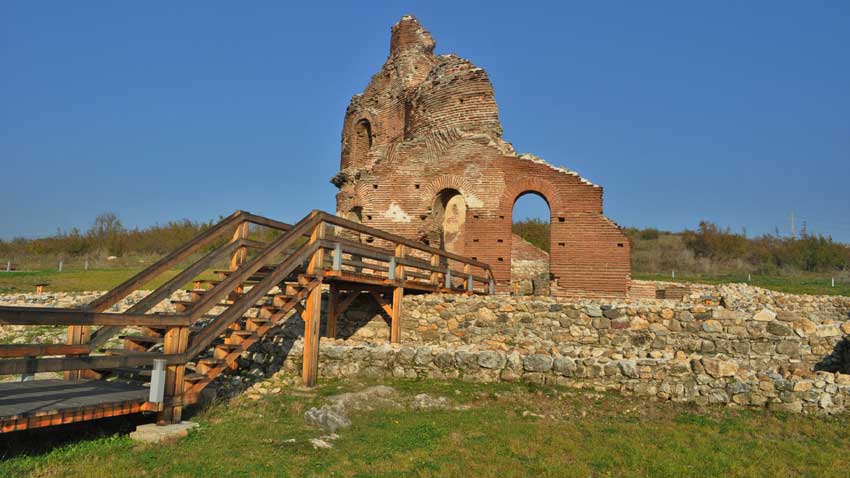The Red Church lies at the foot of the Rhodope Mountains some 2 kilometers away from the town of Perushtitsa and 140 kilometers away from Bulgaria’s capital Sofia. It is among the most remarkable monuments of Early Christian architecture. The temple was recently restored and renovated with money granted from European funds. Thus, the Red Church turned into a very popular tourist site. Experts are still debating over the exact time when the Red Church was built. According to most of them, its construction began at the end of the 4th or the beginning of the 5th century AD, i.e. this church is one of the oldest Christian temples on Bulgarian territory. Experts assume that just like other Bulgarian Christian temples, the Red Church was built above an ancient Thracian sanctuary.

More details about the Red Church from tour guide Maria Andreeva:
“The original building had nothing to do with the architectural form of a church. It was a rotunda with two corridors. It was a place for worship which kept the relics of saints from the Early Christianity. The Ecumenical Council was held back in 324 AD. Then Christianity became the official religion within the Roman Empire. Perhaps this rotunda was built several decades later.”
The rotunda was turned into a Christian basilica during the Middle Ages and was named after the Holy Virgin Mary. The temple was destroyed and rebuilt again several times over the centuries. Currently it is famous under the name of The Red Church due to the Roman-style bricks and the pink mortar used for its construction.

“Most Early Christian churches survived with only 50 centimeters of the original wall (in height) and parts of the original mosaic floor”, Mrs. Andreeva further said. “However, 14 meters of the original wall of the Red Church is fully preserved. According to experts, the main chamber of this temple must have been 17 meters high originally. You can all imagine how impressive this building was! People call it a basilica. However, a regular basilica consists of one single chamber only, whereas this temple had four cupolas and separate chambers. It consists of a main chamber, two surrounding corridors, inner and outer antechamber, a chapel, a sanctuary apse and a baptistery. Two fresco layers are also preserved there. The first one dates back to the 5th-6th century AD and the second one - to the 10th-12th century AD.”

The Red Church was richly decorated and its floor was covered in mosaics. Its walls were partly coated in marble and its upper parts were decorated with beautiful frescos. The temple was destroyed during the 13th century AD. Konstantin Jirecek was the first researcher who showed scientific interest towards this site. In 1883 the Czech historian and Bulgarian politician saw the Red Church for the first time and later described this monument in his chronicles. The site was renovated and conserved in the years preceding the democratic changes in Bulgaria. Today the Red Church attracts many local and foreign tourists. In 2013 its restoration continued with money under the Regional Development Programme of the EU which aims at boosting the development of cultural tourism in this region. For the purpose, an asphalt pedestrian walk to the site and an information center were also built.
English version: Kostadin Atanasov
Photos: Veneta Nikolova
This article is worked out with the support of the project “Communication campaign for encouraging internal tourism in the Republic of Bulgaria” of the Ministry of Economy and Energy
The flow of visitors to the Bulgarian stand at the 28th East Mediterranean International Tourism & Travel Exhibition EMITT does not stop. The exhibition is held until February 7 in Istanbul and is among the five largest tourism..
Bulgaria participates in the international tourism exhibition CMT Stuttgart . The forum is held from January 18 to 26, 2025 , and the main highlights are camping and caravanning, motorcycles, cycling, golf, SPA, cruises and others, reports bgtourism.bg...
"The Rhodope Caterpillar" - that's what they call the train that winds along the slopes of the Rhodope Mountains on the route Dimitrovgrad - Haskovo - Kardzhali - Podkova village. And no, this is not the legendary narrow-gauge railway - it runs in a..

+359 2 9336 661
